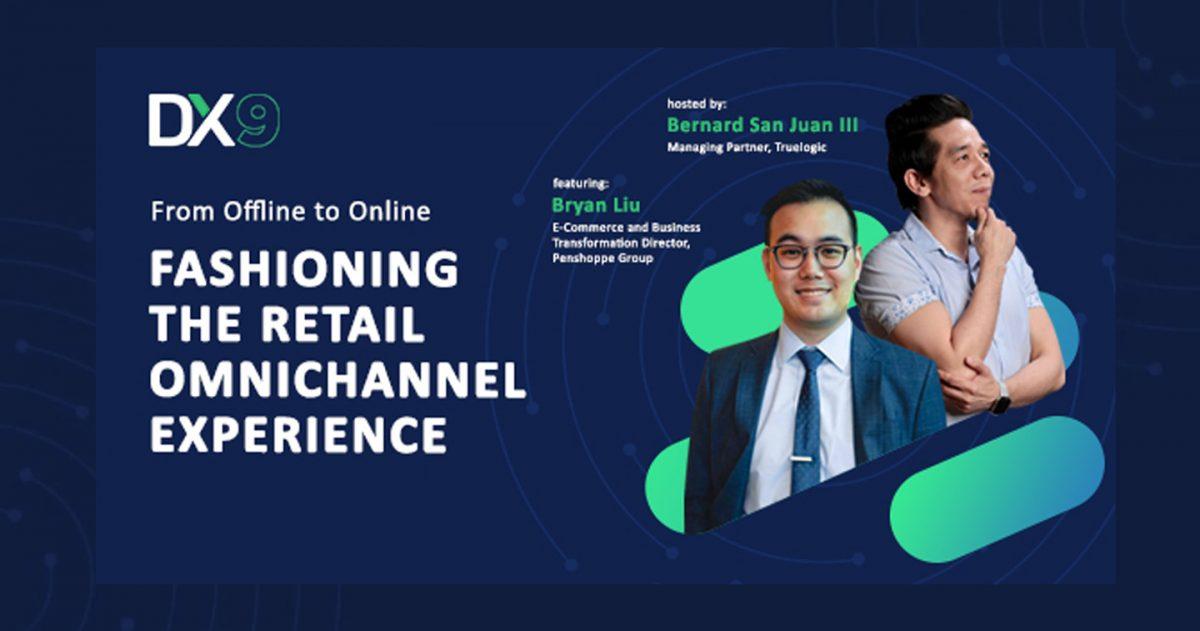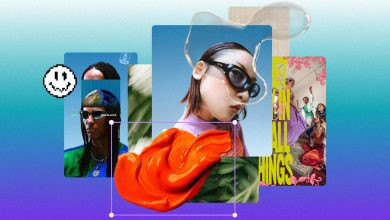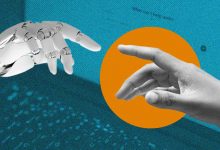MANILA, PHILIPPINES — As consumer shopping behaviors changed to adjust to the pandemic, Philippine retail brands who went online had the chance to learn what customers have come to expect from them.
What’s next for retail now that digital and eCommerce are essential for many businesses?
A possible future for many brands is omnichannel, the theme of Truelogic DX’s ninth live webinar on digital transformation, which was held last July 29.

To discuss this, Truelogic invited as guest speaker Bryan Liu, Ecommerce and Business Transformation Director of the Penshoppe Group (Golden ABC, Inc. or GABC), to discuss how his company was affected by the pandemic – and why they’ve chosen omnichannel technology and practices as their cornerstone strategy moving forward.
Liu oversees the Penshoppe Group’s IT division and end-to-end value chain of their eCommerce business. He is also currently involved in its efforts to create “true, seamless omnichannel experiences” for the Group, which operates over a thousand fully owned brick and mortar stores across six brands: Penshoppe, Oxygen, Memo, ForMe, Regatta, and Bocu.
Liu holds a Commerce degree with an extended major in Marketing from the University of Sydney and has built career expertise in social media, digital strategy, and eCommerce.
Accelerated Digitization: The Groundwork for Omnichannel
Ahead of the pandemic, and well before omnichannel became a buzzword, Penshoppe had observed that its customers were evolving through social media.
Penshoppe needed to have a digital presence. “Okay, you’re not on social media, that’s fine, you’d say back then. But you say that today, and you don’t exist,” Liu said.
In their travels abroad, the Liu family, owners of Penshoppe, had also noticed the convenience of ordering online and picking up in-store or getting personal delivery. The Penshoppe Group also looked to learn from successful omnichannel players, like the Inditex Group (Zara, Pull & Bear, Massimo Dutti), Target, Amazon and pure online businesses like Shein.com.
The Penshoppe Group had something of a head start in terms of its online eCommerce and digital journey. So when the pandemic hit, focusing on its online business wasn’t as difficult as starting from the ground up, says Liu.
“It did accelerate and reprioritize a lot of the things we had to do,” said Liu, who remembers several Penshoppe employees trooping home with their computers on the eve of the lockdown in 2020, and having to close all their stores to comply with government directives.
A Leap In Online Sales
Their online efforts met with success, as Penshoppe’s online sales tripled over the better part of 2020.
This online success came with its own set of challenges, the topmost of which was meeting increased demand. “When we experienced the surge [in orders], our fulfillment capabilities had to go up because we weren’t used to that level of volume,” Liu said.
In the middle of 2020, Penshoppe announced its partnership with Aptos, a retail technology company, to address some of these issues and advance its omnichannel plans.
Liu pointed out that people tend to overlook the people aspect of going digital and that change management is integral to the process.
It’s “more than just saying, ‘I’m going digital,’” Liu pointed out.
It’s Penshoppe’s people who have driven the shift to go digital, he emphasized.
Understanding Omnichannel
Omnichannel can mean a lot of things for different people, Liu said. For Penshoppe, the long-term goal is to “match the natural consumer behavior that’s shifted to using both offline and online.”
That’s why omnichannel makes sense to Penshoppe. “Omnichannel for us means marrying and merging both our online and offline worlds because we are still primarily a brick and mortar-driven company,” Liu said.
Penshoppe wants to give its primary target markets – Millennials and Gen Z-ers – the best shopping experience possible.
This includes shopping on marketplace platforms like Shopee and Lazada, and allowing customers to easily return and exchange these purchases in any of their physical stores.
“That’s something we came up with and we’re now offering to our customers. We know that online and offline shouldn’t be competing with each other,” he said.
Cash on delivery is still the main medium of payment for customers, and a pain point for many retailers like Penshoppe.
“From a retailers’ perspective, we are sending out and [advancing payment] for a product that hasn’t been paid for yet. So we have exposure there in terms of freight cost,” Liu said.
“I do think, however, that we may be able to leapfrog directly from cash to mobile payments, and bypass the credit card phase entirely,” Liu said.
Preserving The Brand

Bernard San Juan, Truelogic Managing Partner and host of the webinar asked Liu: How does a brand go about translating the integrity of its identity from real life to the digital space?
“The way our stores look offline have to be very similar to the way our stores look online. You can’t have different visual merchandising cues and colors,” he stated.
“Same thing with the way our brands sound, online and offline; it has to be as consistent as possible.”
Liu admits that there have been many attractive and tempting decisions to make in terms of product, channel, or opening new branches.
“But at the end of the day, if it doesn’t answer the question, ‘Does it give a better experience to our customers?’, that’s something we tend to walk away from,” he said.
Does Omnichannel Make Sense for Everyone?
San Juan remarked, “Sooner or later is going to end and move behind us…will omnichannel still be the way to go after that?”
Liu replied, “Yes, and that pretty much sums up what we think of omnichannel. We think omnichannel is the future of retailing.”
Liu is hopeful that people will be back in the malls again soon and that people are going to go shopping again.
However, he is also willing to bet that the expectations of being able to shop or do window shopping, if not actually buy online, are going to stay.
He recognizes that some brands don’t see omnichannel as a fit for them.
For Penshoppe, it boils down to purpose. If the company is deciding between two options, Liu says, “We just ask ourselves which one will give the better experience or customer.”
Omnichannel Players
San Juan observed, “I don’t think there are, necessarily, any leaders in the omnichannel retail fashion space in the Philippines.”
Liu sees an opportunity to make a mark in local retail. “When we decided to go through with our omnichannel journey, we had a vision of what omnichannel meant for [us]. Part of our omnichannel vision is to shape the shopping experiences of the future in the Philippines,” Liu stated.
“We don’t know whether it’s one hundred percent right, or one hundred percent wrong. I mean, we’re pretty confident in it. But our goal is to be able to influence the way that people shop, moving forward, in the Philippines.”
Visit the Truelogic YouTube page to watch the whole replay of this webinar – and feel free to learn more about past webinar sessions on the Truelogic DX page.
About Truelogic Inc.:
Truelogic Inc. is a digital marketing agency and a leader in the digital sphere providing flexible, scalable, results-driven digital marketing solutions to local and global clients from a range of industries. For ten years now, the company has invested heavily in research and development to complement and advance the expertise of its employees and benefit clients.
For PR information and exclusive interviews, email [email protected]








